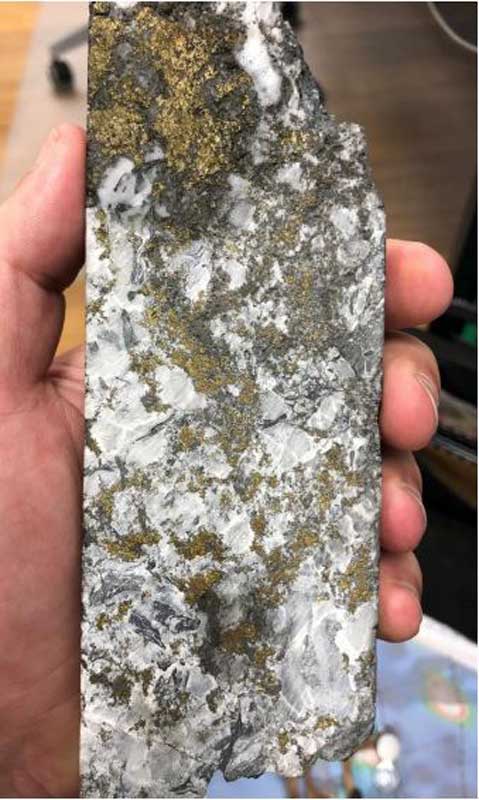Base Metals: First drilling since the 1950s leads Dreadnought to multiple new copper-gold zones at Grants
Mining
Mining
Dreadnought Resources (ASX:DRE) has given investors a glimpse at some of the “highly mineralised” copper and gold zones it has uncovered in WA’s West Kimberley.
It is the first time drilling has been undertaken at the Grants project since the 1950s and Dreadnought has hit paydirt.
Investors welcomed the news, pushing shares up 11 per cent to 1c just after market open this morning.
Dreadnought revealed that recent drilling intersected multiple zones of mineralisation, including a 21.5m down hole hit.
This is what it looks like:

The project was initially identified and mined on a small scale for high-grade copper pre-World War 1 and the last significant exploration was undertaken in the 1950s by Western Mining Corporation (WMC).
Dreadnought managing director Dean Tuck said drilling had visually confirmed the tenor of mineralisation from WMC’s prior drilling.
It will provide the company with information to fingerprint the mineralised system and to develop geochemical and geophysical vectors to assist in generating further drill targets in the region.
“It is hard to believe that, despite the presence of outcropping mineralisation, this will be the first drill program at Grants since 1959,” Tuck said.
Assays are expected back in December.
St George Mining (ASX:SGQ) has reported more good news from step out drilling at its Mt Alexander project with the discovery of multiple electromagnetic (EM) conductors down plunge of shallow nickel and copper sulphide deposits. “These new EM targets from the deeper holes indicate that the large, high-grade mineral system at the Cathedrals Belt is ‘live’ at depth,” executive chairman John Prineas told investors. Shares climbed nearly 6 per cent to 18c on the news.
Read more: Base Metals: More solid nickel, copper hits at Mt Alexander kick St George shares up
Superior Lake Resources (ASX:SUP) has found its fourth geophysical conductive body during drilling of a third hole at its namesake zinc project in Ontario, Canada. Known as the Winston footwall, the new find has a similar strike, dip and plunge as the Winston deposit, which once produced about 3.1 million tonnes at 16 per cent zinc.
Copper Mountain Mining (ASX:C6C) has increased the size of the reserve for its Copper Mountain mine in southern British Columbia by 12 per cent. The proven and probable reserve now sits at 477 million tonnes grading an average 0.23 per cent copper and 0.1 grams per tonne gold for contained metal of 2.47 billion pounds of copper and 1.55 million ounces of gold. Copper Mountain has also reduced the mine’s strip ratio and upped the mine life by 4.5 years to 31 years at current planned production levels.
Drilling by White Rock Minerals (ASX:WRM) at its Dry Creek deposit has delivered more massive sulphide zinc, silver, lead and gold mineralisation over 200m down dip from previous drilling. The Dry Creek deposit is part of the high-grade Red Mountain zinc and precious metals project in central Alaska. White Rock is awaiting assays.
Lastly, Consolidated Tin (ASX:CSD) has been reinstated to trading after completing its recapitalisation. Managing director Ralph De Lacey said in parallel with the re-listing process, the company had been developing two projects, the new Mt Garnet Deeps underground mine project and the re-establishment of the Dry River South mine at the Surveyor Project, 150k south of Mt Garnet. “Both these mines are now nearing steady state production,” he said.